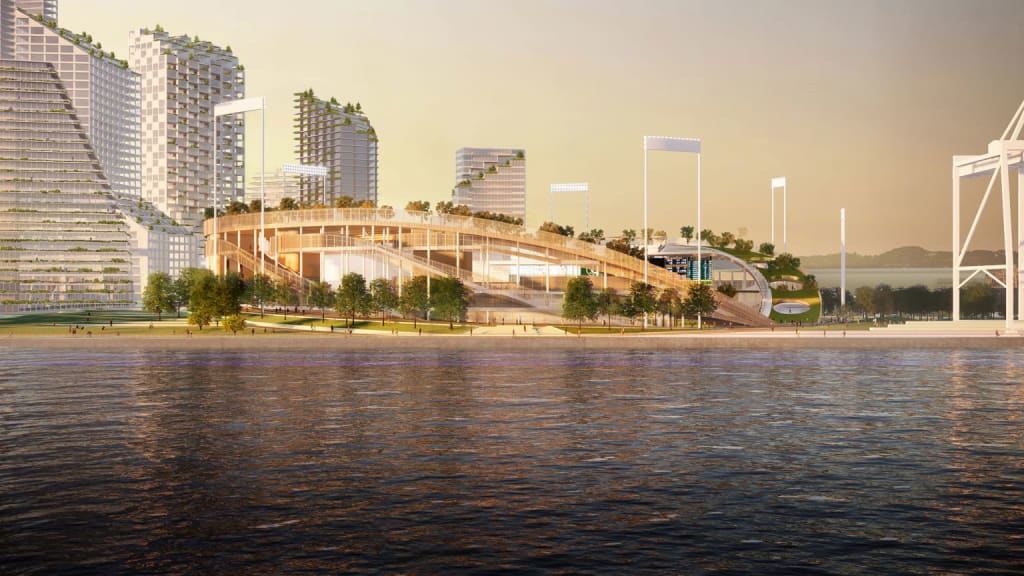
The plan for a new waterfront ballpark for the Athletics has taken an important step forward.
After a review process that involved considering more than 4,000 public comments over the past few months, the city of Oakland released a final version of the environmental impact report for the A’s proposed $12 billion ballpark project near Howard Terminal on Friday morning.
The city’s release of the environmental report is an important milestone, as the 3,500-page document outlines the areas of concern to be addressed before moving forward with the A’s stadium project, such as pollution, traffic and the removal of toxic waste from the Howard Terminal area.
Oakland Mayor Libby Schaaf, who has been a vocal proponent of the A’s ballpark venture, called Friday’s release of the EIR a “major milestone” on the path to securing the project. In addition to a 35,000-seat open-air waterfront ballpark, the A’s plan for the surrounding area includes up to 3,000 units of housing, 1.5 million square feet of office space, 270,000 square feet of retail space, 280,000 square feet of hotel space and a 50,000 square-foot indoor performance venue with a capacity of up to 3,500.
“This 3,500-page document ensures that the project is environmentally safe and sustainable,” said Schaaf. “It also keeps us on track to bring the project for a final vote to the city council in 2022 -- and brings us one step closer to keeping our beloved Athletics rooted in Oakland.”
When the previous city council vote regarding the A’s new ballpark took place in July, one hurdle centered around how to fund an estimated $352 million in offsite transportation improvements and infrastructure costs. Last month, Schaaf said the city of Oakland accepted the responsibility to pay for offsite infrastructure. The city would utilize around $260 million awarded to the project from the state budget and up to another $150 million via a limited obligation bond from non-property tax revenues generated by the project.
The next step in the process is for Oakland’s Planning Commission to determine a recommendation of approval for the EIR; that vote is expected to take place on Jan. 19. After that, the Oakland City Council would decide whether to certify the report in February. Should approval come from both parties, the final binding vote that Schaaf referred to would likely come shortly afterward, putting the A’s near the finish line on seeing their vision for a state-of-the-art facility near Jack London Square come to life.


